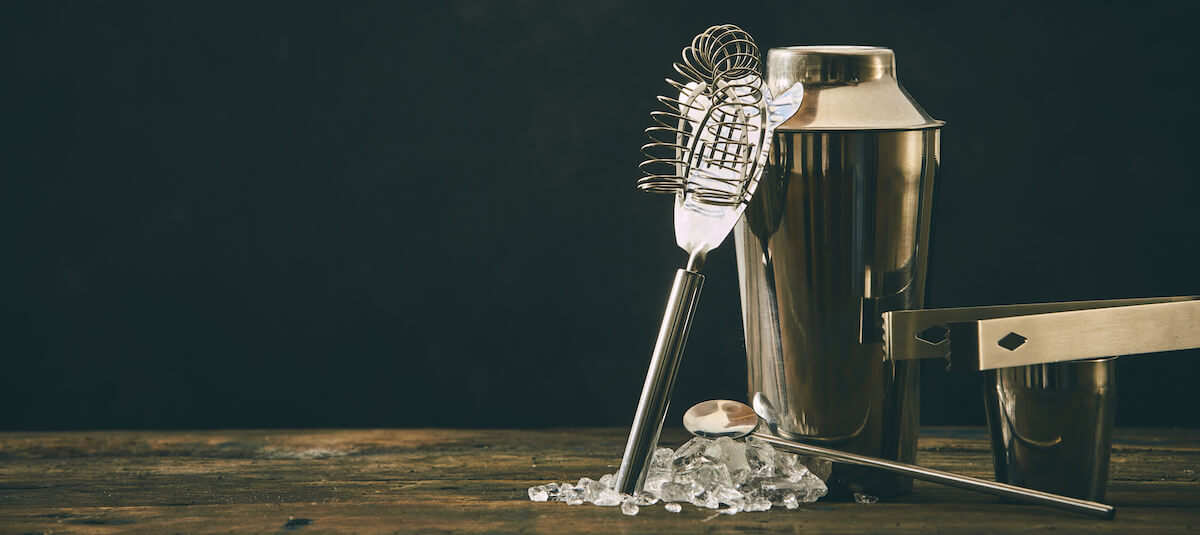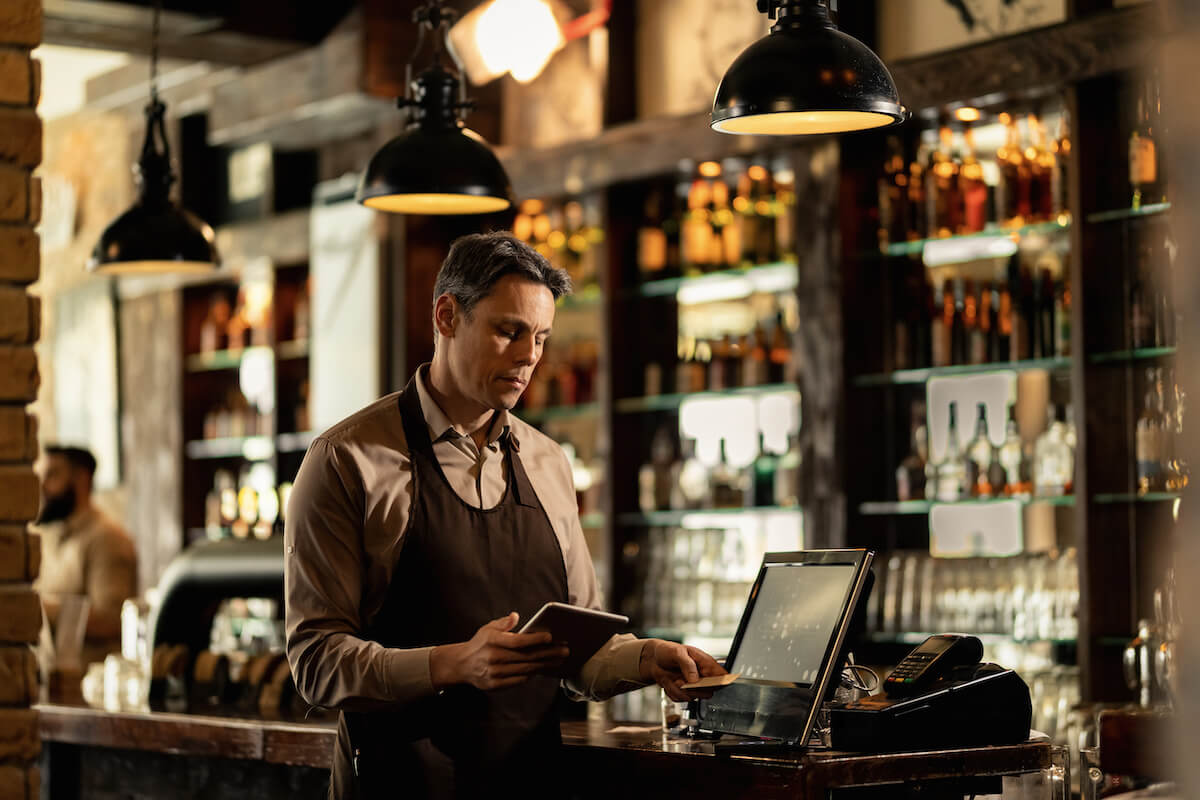The bar owner’s essential guide to bartender training
Skip the article and turn takeaways into action by scheduling a call with our team.
If you’re not taking graduates straight from bartending school, you’ll probably have to offer some kind of bartender training. Being a professional bartender is a hands-on job with know-how that can’t be found in a book or an online course.
Whether you’re running a bar that prides itself on shaker-heavy mixology or just a simple beer-and-wine sort of joint, the communication skills and pouring of alcoholic beverages must come from in-person training. Plus, even the most experienced bartenders will need to learn the ins and outs of your particular establishment.
Furthermore, it’s no secret that the hospitality industry has a high staff turnover, so training new staff members is an integral part of bar management. Training needs to be quick, easy to learn, and effective.
So if you’re planning on putting together your own in-house bartending course or just want to know the basics of bartender training, you’re in the right place. Read on to find out our best tips and tricks on how to train a great bartender.
Devise a bartender training program

If you’re planning to expand, already run a chain of bars, or just have high turnover, it would be wise to develop a training program. If full-time staff are a rarity, just passing on bartending knowledge to newbies while working busy shifts could lead to new starters not getting the coaching they need.
Come up with a training program that specifically focuses on bartender training that reflects the type of drinks you sell. If you run a loud and proud nightclub where the movie Cocktail inspires flair bartending, teach bartenders how to interact with customers, throw bottles around, and free pour. Conversely, a bar attached to a fine-dining restaurant should teach a beverage service that uses a jigger to mix drinks and ensures that staff have an in-depth knowledge of all things alcoholic.
Suppose you want to make some extra money and need another reason to attract knowledge-thirsty new starters. In that case, you could even get your company accredited and offer a bartending certification at the completion of your bartender training course.
Add bartending tricks to your SOPs

You know we said before that you couldn’t learn bartending out of a book? Well, this piece of advice sort of contradicts that rule, but hear us out.
Restaurant SOPs (standard operating procedures) are little how-to guides that can help your team members complete tasks with set rules specific to your bar or restaurant. They help get everybody on board with a set way of working, hopefully resulting in less confusion and conflict.
SOPs usually consist of printed-out guides stored in folders that are easily accessible on the job. Some companies create apps allowing them to share SOPs with their team so they can access them via their smartphones.
An SOP on certain cocktail recipes could support a forgetful mixologist on how to make a rarely-ordered classic cocktail. A simple three-ingredient drink such as a White Russian falls flat if you forget the Kahlúa.
Most bars tend to have more than one bartender working at a time, so when somebody pulls out an SOP, they can still get hands-on bartender training from a more senior bartender.
Show new bartenders every bar tool

At the beginning of a new bartender’s job placement, their training should consist mainly of how to remain confident and calm when the bar gets busy. They can focus on keeping the place clean, interacting with customers, and pouring simple drinks such as wines and beers. When their skills increase and their confidence rises, it’s time to show them the ropes of mixology by introducing them to the vast array of bar tools.
First, newbies must start with a jigger when preparing mixers. This simple tool may not look as cool as free pouring, but it teaches new starters how vital measuring is in drinks. It also helps with your inventory management. Alcohol is an expensive food item at the end of the day, and helping your staff measure correctly means fewer bottle orders at the end of the month.
It’s essential that bartenders learn how to correctly use shakers, using a movement that both looks impressive and efficiently mixes drinks. They will also learn how to use a strainer to keep ice out of finished cocktails.
Some new bartenders may have zero kitchen experience, which means they have a lot to learn when it comes to vegetable or fruit garnish in drinks. You’ll have to teach them how to use chopping boards, peelers, and knives safely and effectively to create a professional drink standard.
Teach bartenders how to handle money

You’re going to be training up a lot of part-time staff. There’s a possibility that this could be many people’s first job too. Make sure that your bartender training caters to every type of new employee, including those with no experience with money management.
Even though cash is beginning to die out, learning how to use a register and give change is still relevant. Giving change in an environment that is likely to be in sensory overload at certain times of the night is a skill in itself. Teach your staff how to use card readers, too and what to do if a card is declined.
Don’t forget that letting underage drinkers drink at your bar could lead to having your license removed. So teach all bar staff how to look for underage drinkers, ask for ID, and spot a fake ID.
Bartender training can be as in-depth as you wish

Nobody knows your bar better than you do. You understand its reputation, standards, and what you want it to become. Develop the type of bartender training that best suits your bar. Do you need to create an in-depth course? Or is the knowledge required easy enough for a senior staff member to pass it on through on-to-job training?
Remember that if your business has the resources, you could create a training program that rewards successful students with bartending certification. You can update your SOPs with cocktail recipes and bartending tricks. Teach new starters about every bar tool you have, how to handle money, and how to ID drinkers.
The bar and the rest of your front-of-house can be stressful to manage at times, and sometimes a little help can go a long way. Take charge of your FOH management and improve your customer’s experience with Yelp Guest Manager. This software supports your team by handling reservations and waitlists, allowing customers to check themselves in, and much more.
Restaurants that use Guest Manager paired with Yelp Ads experience 87% more traffic on their Yelp business page.